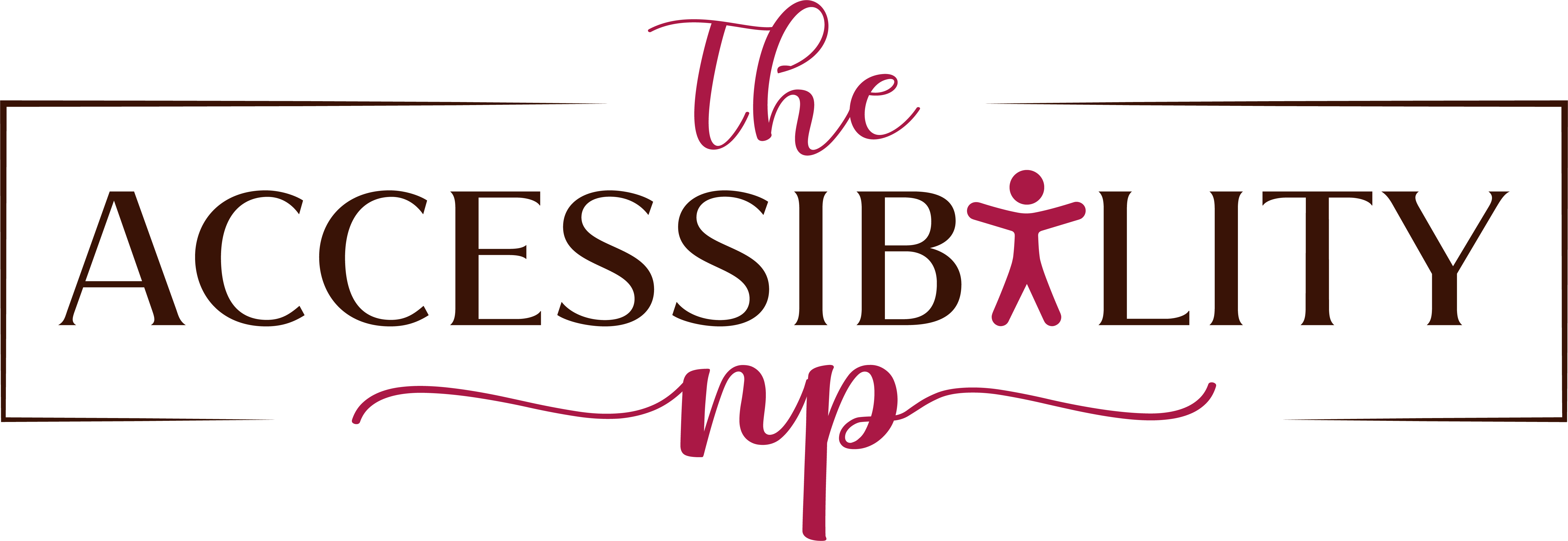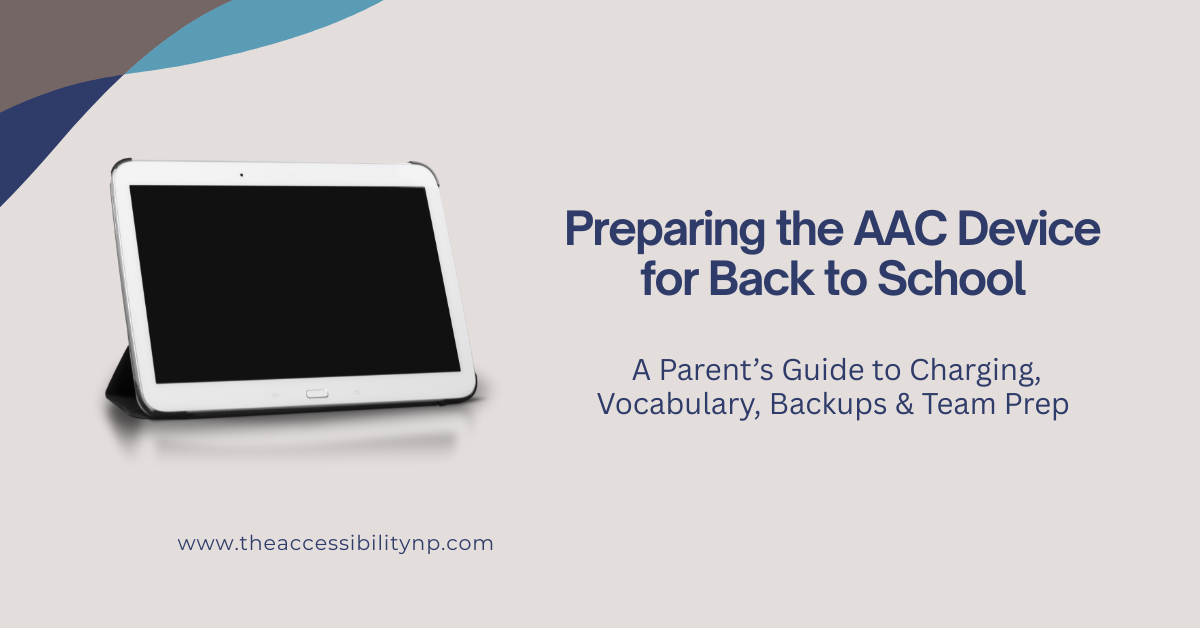The beginning of a new school year always brings a mix of excitement and nerves—but when you’re the parent of a child who uses an AAC device, there’s a whole different kind of checklist. It goes far beyond new backpacks and sharpened pencils. It’s about making sure your child’s voice—however they express it—is charged, updated, and ready to go from the very first day.
This blog is your back-to-school guide for AAC preparation. Whether your child is using a high-tech device like a dedicated speech-generating tablet, an iPad app, or a low-tech core board, this post will walk you through what you need to do now to set them up for success all year long.
Because at the end of the day, this isn’t just about a device. It’s about making sure your child is fully supported, fully understood, and fully included—right from day one.
Start with Charging Habits
It might seem simple, but one of the most common barriers to AAC access is a dead battery. If your child’s device isn’t fully charged, their voice isn’t fully available. That can lead to stress, frustration, and even missed learning and social opportunities.
The best time to establish a charging routine is before the first day of school. In the same way we help children build back-to-school sleep habits or morning routines, we can help them build habits around their AAC device, too.
Create a dedicated charging station—somewhere consistent, safe, and easily accessible. Ideally, it should be a place your child sees daily so they can begin to associate it with winding down for the night. If possible, keep extra chargers labeled and stored in school and home backpacks, especially if your child switches locations during the week. For students with limited motor skills or executive functioning, visual reminders (like a laminated “Plug in My Voice” sign near the outlet) can help reinforce the routine.
If your child uses Bluetooth accessories like speakers, keyguards, or switches, those need to be charged too. It’s easy to forget, so build them into the charging routine as well.
Don’t Skip Troubleshooting
Just like we try on school shoes before the first day, AAC devices need a trial run, too. Don’t assume everything is working just because the screen lights up.
Turn the device on and check for any lag, app glitches, or startup issues. Test the volume and make sure the speech output is clear. Confirm that the correct AAC app is opening and that none of the personalized settings or folders have been reset or lost during summer updates.
This is also the time to check physical accessories. Is the case still secure? Are switches still responding as expected? Is the keyguard aligned? If your child uses mounting or positioning supports, make sure all hardware is clean, adjusted, and in working order.
You don’t want to discover these issues in the car line or as your child is rolling into their first class of the year. Taking the time now ensures your child—and their team—starts off on the right foot.
Refresh Core Vocabulary
Children grow and change a lot over the summer, and so do the words they want to use. Maybe their favorite show changed. Maybe they picked up new interests at camp or home. Maybe they need new phrases to talk about what’s coming up in the fall. That’s why it’s important to review and update the vocabulary in your child’s AAC system before school starts.
Begin with the basics: are the most frequently used core words still available on the home screen or first layer? Words like want, help, more, stop, and go should be easy to find and visually accessible. Next, look at social and emotional vocabulary. Words like excited, worried, tired, and ready are useful during big transitions like the first week of school.
Then consider school-specific language. Does your child have access to:
-
The names of teachers or staff?
-
Classroom objects like folders, pencils, and markers?
-
School routines like lining up, recess, or dismissal?
-
Any specific subjects they enjoy, like music, science, or art?
If your child has difficulty with transitions or new environments, you might also want to add supportive language for requesting breaks, asking for help, or saying “I don’t know” or “not yet.”
AAC vocabulary isn’t one-size-fits-all. It should reflect your child’s personality, routine, and needs. Updating it before school starts gives them the confidence to jump into the year already equipped.
Reintroduce the Device in Daily Routines
Even if your child used their device regularly during the summer, it’s helpful to bring it back into structured routines before school starts. This isn’t about formal therapy—it’s about building fluency and comfort.
Begin modeling AAC use during morning and evening routines. For example:
-
“Time to get dressed” → model get or dressed
-
“What do you want for breakfast?” → model want, eat, or banana
-
“Do you need help?” → model help or yes/no
You’re not expecting your child to repeat or copy you. You’re showing them how their words work. It’s called aided language stimulation, and it’s one of the most important strategies in AAC support.
If your child is younger or new to AAC, you can even set up pretend “school” sessions at home. Practice using the device to line up, listen to a story, or raise a hand to answer a question.
The more the device is used in real, meaningful ways before school starts, the more likely your child will use it confidently in the classroom.
Backup the System—Now, Not Later
Imagine programming your child’s entire vocabulary folder, only to lose it all to a software update or factory reset. Backing up your child’s AAC layout is one of the most essential things you can do—and it only takes a few minutes.
Each AAC app has its own method for backing up vocabulary sets. For example:
-
TouchChat uses iShare and allows cloud-based backups
-
Proloquo2Go allows local and cloud exports
-
LAMP Words for Life can export and save files via iTunes or AirDrop
Check your app’s user manual or website for detailed instructions. Once you’ve done the backup, save it in more than one place—on your device, in a cloud storage app, or emailed to yourself. If allowed, you can also share a copy with your child’s SLP or AAC team at school for safekeeping.
Low-tech backups are just as important. Print and laminate a copy of your child’s core word board or device home screen and place it in their backpack. Have extras in the classroom, therapy bag, and car.
AAC access should never disappear just because a battery dies or software crashes. A backup ensures that communication is always within reach.
Prep the School Team
Even if your child is returning to the same school, the staff may change. Teachers, aides, and therapists need to understand how to support your child’s communication system from the first week. Don’t assume everyone is familiar with your child’s device or AAC strategies.
Create a short, parent-friendly handout with key information. Include:
-
Your child’s name and preferred mode of communication
-
The name of the AAC app and the device it runs on
-
Any passwords or steps to open the app
-
A quick description of how your child uses the system (e.g., types single words, uses scripts, prefers yes/no first)
-
Tips on how to model or prompt
-
What to do if the device malfunctions or the child refuses it
-
Who to contact for tech support (including yourself and the school SLP)
Keep it to one page. Use photos or screenshots when possible. You can place it inside the AAC case or send it digitally to the team during the first week.
If possible, ask the school to designate one adult to be the device point person—someone who ensures it’s charged, available, and properly stored each day.
Teach Your Child to Advocate
Depending on your child’s age and communication skills, now is also a good time to work on basic AAC self-advocacy. This can be as simple as programming a button that says:
-
“I need my device.”
-
“It’s not working.”
-
“I don’t understand.”
-
“Please give me time.”
These are powerful tools for reducing frustration and ensuring your child’s needs are met. The goal isn’t independence overnight—it’s helping your child learn that they can ask for help and that their voice deserves to be heard.
Final Thoughts
Back-to-school prep can feel overwhelming—but when we take the time to prepare AAC devices with intention, we give our children more than just a voice. We give them dignity, autonomy, and the confidence to walk into their classroom ready to learn, connect, and thrive.
Your child’s voice is valid.
Their words—however they’re shared—matter.
And this school year, they deserve to be heard from day one.
You’ve got this. And if you need support, you’re not alone.
—Yolanda
The Accessibility NP

